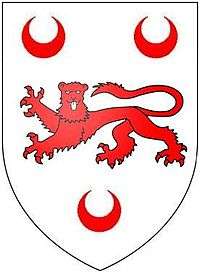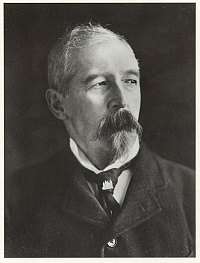Viscount Dillon


17th Viscount Dillon.
Viscount Dillon, of Costello-Gallen in the County of Mayo, is a title in the Peerage of Ireland. It was created in 1622 for Theobald Dillon, Lord President of Connaught. The Dillons were an Hiberno-Norman landlord family from the 13th century in a part of County Westmeath called 'Dillon's Country'. His great-grandson, the seventh Viscount, was a supporter of the Catholic King James II of England and was outlawed after the Glorious Revolution. He founded 'Dillon's Regiment' of the Irish Brigade in the French Army, which was supported by the Wild Geese and achieved success at Fontenoy in 1745.
However, his son Henry, the eighth Viscount, managed to obtain a reversal of the outlawry in 1694 and later served as Lord Lieutenant of County Roscommon. His younger brother, Lieutenant-General Arthur Dillon, was given the French title of Count Dillon in 1711 and was also created "Viscount Dillon" and "Earl of Dillon" by James Francis Edward Stuart, the Jacobite claimant to the throne. His son Henry, the eleventh Viscount, was a Colonel in the French Army, but Dillon's Regiment was disbanded in 1793 due to the turmoils of the French Revolution. His son Charles, the twelfth Viscount, notably represented Westbury in Parliament and conformed to Anglicanism in 1767. His son Henry Augustus, the thirteenth Viscount, sat as a Member of Parliament for Harwich and County Mayo. His great-grandson, the nineteenth Viscount, was a Brigadier in the Army. As of 2014 the title is held by the latter's great-grandson, the twenty-second Viscount, who succeeded his father in 1982.
Viscounts Dillon (1622)
- Theobald Dillon, 1st Viscount Dillon (died 1624)
- Lucas Dillon, 2nd Viscount Dillon (1610–1629)
- Theobald Dillon, 3rd Viscount Dillon (1629–1630)
- Thomas Dillon, 4th Viscount Dillon (1615–1672)
- Thomas Dillon, 5th Viscount Dillon (died 1674)
- Lucas Dillon, 6th Viscount Dillon (died 1682)
- Theobald Dillon, 7th Viscount Dillon (died 1691)
- Henry Dillon, 8th Viscount Dillon (died 1713)
- Richard Dillon, 9th Viscount Dillon (1688–1737)
- Charles Dillon, 10th Viscount Dillon (1701–1741)
- Henry Dillon, 11th Viscount Dillon (1705–1787)
- Charles Dillon, 12th Viscount Dillon (1745–1813)
- Henry Augustus Dillon, 13th Viscount Dillon (1777–1832)
- Charles Henry Dillon, 14th Viscount Dillon (1810–1865)
- Theobald Dominick Geoffrey Dillon, 15th Viscount Dillon (1811–1879)
- Arthur Edmund Denis Dillon, 16th Viscount Dillon (1812–1892)
- Harold Arthur Dillon, 17th Viscount Dillon (1844–1932)
- Arthur Henry Dillon, 18th Viscount Dillon (1875–1934)
- Eric FitzGerald Dillon, 19th Viscount Dillon (1881–1946)
- Michael Eric Dillon, 20th Viscount Dillon (1911–1979)
- Charles Henry Robert Dillon, 21st Viscount Dillon (1945–1982)
- Henry Benedict Charles Dillon, 22nd Viscount Dillon (born 1973)
The heir presumptive is his cousin, Thomas Arthur Lee Dillon (born 1983) the son of his uncle Hon. Richard Arthur Louis Dillon (1948–2014).[2]
In France
Being of foreign origin, the Dillons needed to be "reconnus nobles en France" as "noblesse d'origine etrangere" and "maintenus nobles". They were "maintenus nobles" in 1759.
What's more, they were acknowledged as being of "extraction chevaleresque" (very old nobility), having been noble since 1347, and so allowed to the "Honneurs de la Cour" by the King of France in 1750, 1769, 1770, 1775, 1777, 1785 and 1788.
See also
Notes
- ↑ Burkes Landed Gentry, 1937, Dillon of The Hermitage, Bodicote, Oxon; Debrett's Peerage, 1967, Viscount Dillon
- ↑ https://groups.google.com/forum/#!topic/peerage-news/FdcC03xp_YI
References
- Kidd, Charles, Williamson, David (editors). Debrett's Peerage and Baronetage (1990 edition). New York: St Martin's Press, 1990,
- Leigh Rayment's Peerage Pages